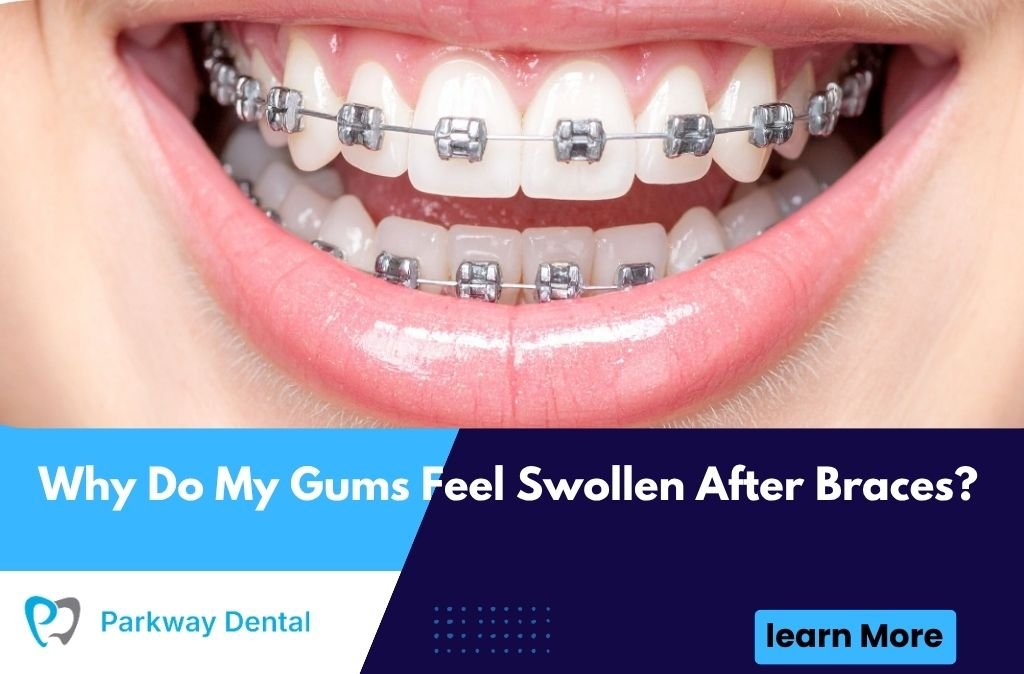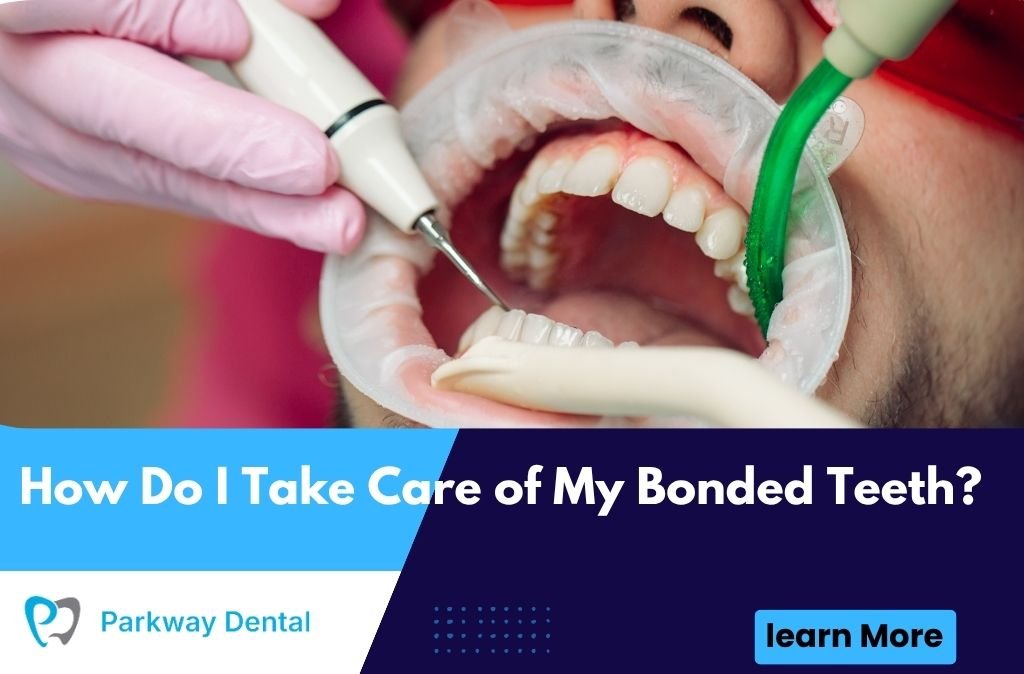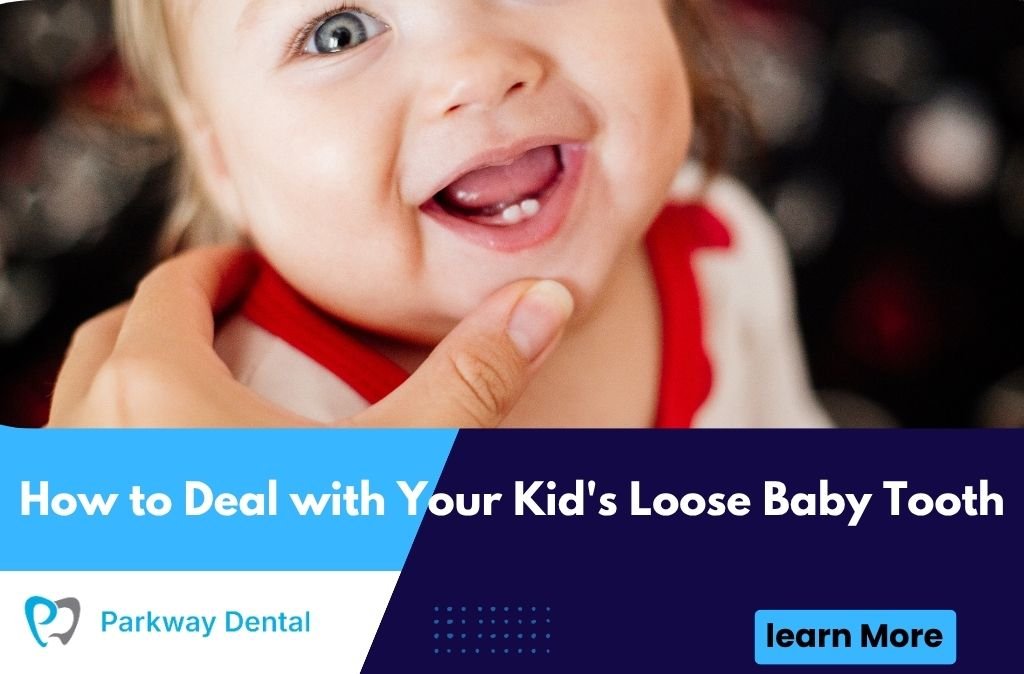It’s common to feel some gum swelling during or after orthodontic treatment. After braces are removed, many people notice their gums look puffy, tender, or slightly overgrown. While this may feel concerning, it’s usually a temporary condition that happens as your gums adjust to the changes in your mouth.
Understanding why your gums swell after braces — and how to manage it — is essential for maintaining healthy teeth and gums after orthodontic care. Let’s look at the possible causes, how to treat it, and what steps can help prevent it from happening again.
Table of Contents
Understanding Gum Swelling After Braces
When you wear braces, your teeth move slowly through the bone and gum tissues to reach their correct position. This process can cause mild irritation in the gums, especially when brackets and wires press against them.
After the braces come off, the gums may feel swollen because they’re adjusting to new tooth positions. Food debris and plaque that built up around brackets during treatment can also irritate gum tissue, leading to inflammation.
Common Causes of Gum Swelling After Braces
Swollen gums can occur for several reasons during or after orthodontic treatment. Identifying the cause helps determine the right solution.
Plaque and Tartar Buildup
Braces make it difficult to clean around brackets and wires, allowing plaque to collect along the gumline. When plaque hardens into tartar, it irritates the gums and causes them to become swollen and tender.
This inflammation — known as gingivitis — is one of the most common reasons for gum swelling after braces are removed. Regular professional cleaning after orthodontic treatment helps eliminate buildup and restore gum health.
Gingival Hyperplasia (Gum Overgrowth)
Some patients experience gingival hyperplasia, a condition where gum tissue grows excessively around the teeth. This can happen due to irritation from braces or poor oral hygiene.
The overgrown tissue traps more bacteria, making the swelling worse. Your dentist may recommend a deep cleaning or, in severe cases, minor gum reshaping (gingivectomy) to restore normal gum contours.
Inflammation from Tooth Movement
When teeth are repositioned during orthodontic treatment, the gums and surrounding tissues stretch and adapt. This process naturally triggers mild inflammation.
Even after braces are removed, the gums need time to settle around the newly aligned teeth. This post-treatment inflammation usually subsides within a few weeks with proper brushing, flossing, and rinsing.
Food Impaction or Poor Cleaning After Removal
After braces come off, small gaps may appear between teeth and gums where plaque or food particles can get trapped. If these areas aren’t cleaned properly, bacteria multiply and cause swelling.
Flossing and using an antibacterial mouthwash can help prevent this buildup and soothe irritated gums.
Retainer Irritation
Wearing a retainer after braces helps maintain alignment, but if it doesn’t fit perfectly, it can rub against the gums and cause irritation.
A retainer that’s too tight or rough on the edges may lead to soreness or swelling in specific spots. If this happens, contact your orthodontist to have it adjusted or replaced.
How Long Does Gum Swelling Last After Braces?
Mild swelling after braces removal is temporary and usually lasts a few days to a few weeks. Once your gums adapt to the new tooth positions and you improve your cleaning routine, they’ll return to normal.
However, if the swelling persists longer than two weeks, it could indicate lingering plaque, gingivitis, or gum overgrowth. In that case, schedule a dental cleaning or exam to prevent complications.
How to Reduce Gum Swelling After Braces
Proper oral care and a few simple habits can help reduce swelling and speed up healing.
Brush and Floss Thoroughly
Brush twice daily with a soft-bristled toothbrush and fluoride toothpaste. Pay special attention to the gumline where plaque tends to accumulate.
Flossing removes trapped food and bacteria between teeth, preventing further irritation. If your gums are sore, use waxed floss or a water flosser for gentle cleaning.
Use an Antibacterial Mouthwash
Rinsing with an antibacterial or saltwater mouthwash reduces bacteria and soothes inflammation. Saltwater rinses (1 teaspoon salt in a cup of warm water) can calm swollen gums naturally.
Avoid alcohol-based mouthwashes, as they can dry out tissues and worsen discomfort.
Maintain a Healthy Diet
A diet rich in vitamins C and D supports gum healing and reduces inflammation. Avoid sugary or sticky foods that can promote bacterial growth.
Drinking plenty of water helps flush away food particles and maintain saliva flow, which naturally cleans the mouth.
Schedule a Professional Cleaning
After braces are removed, a professional cleaning is essential. Your hygienist will remove tartar buildup and polish your teeth to prevent further irritation.
If you have gum overgrowth, your dentist may recommend a minor procedure to reshape the gum tissue and improve oral hygiene access.
Use Cold Compresses
If your gums feel tender or puffy, applying a cold compress to the outside of your cheek for 10–15 minutes can help reduce inflammation and discomfort.
Can Gum Swelling After Braces Be Prevented?
Yes. Good oral hygiene during and after orthodontic treatment can significantly lower the risk of gum swelling.
Brush Around Brackets Carefully
Use an orthodontic toothbrush or electric brush to clean around brackets, wires, and gums effectively. Brush at a 45-degree angle to remove plaque buildup at the gumline.
Fluoride toothpaste strengthens enamel and helps prevent decay near brackets.
Floss Daily Even with Braces
Flossing might be tricky with braces, but skipping it allows plaque to thrive between teeth. Orthodontic floss threaders or water flossers make it easier to clean thoroughly.
Regular Dental Visits During Orthodontic Treatment
See your dentist for routine cleanings every 3–6 months while wearing braces. They can remove tartar buildup, check gum health, and provide fluoride treatments to prevent swelling and decay.
When to See a Dentist for Swollen Gums
Some gum swelling is normal after braces removal, but you should contact your dentist if you notice:
- Persistent swelling that lasts more than two weeks
- Bleeding when brushing or flossing
- Pain or pus around the gums
- Gum tissue covering part of your teeth
- Bad breath that doesn’t go away
These symptoms may indicate gum disease or infection that requires professional treatment.
Long-Term Gum Health After Orthodontic Treatment
Caring for your gums doesn’t stop after your braces come off. Maintaining good hygiene habits ensures your smile stays healthy and your gums remain firm and pink.
Regular Check-Ups and Cleanings
Continue seeing your dentist every six months for exams and cleanings. Professional maintenance removes hidden plaque and helps detect early signs of gum problems.
Continue Using Your Retainer Properly
A well-fitted retainer prevents your teeth from shifting, which can stress the gums. Clean your retainer daily and store it properly to avoid bacteria buildup.
Monitor for Gum Recession or Irritation
Even after braces, monitor your gums for any recession, swelling, or bleeding. Early intervention keeps your oral health stable and prevents long-term complications.
Conclusion
Swollen gums after braces are usually a sign that your mouth is adjusting — but they should never be ignored. With proper brushing, flossing, rinsing, and regular professional cleanings, your gums will quickly return to normal.
If the swelling persists, worsens, or causes pain, it’s important to seek help from an experienced Dentist in West Roxbury, MA who can assess your condition and recommend personalized care for long-term gum health.





